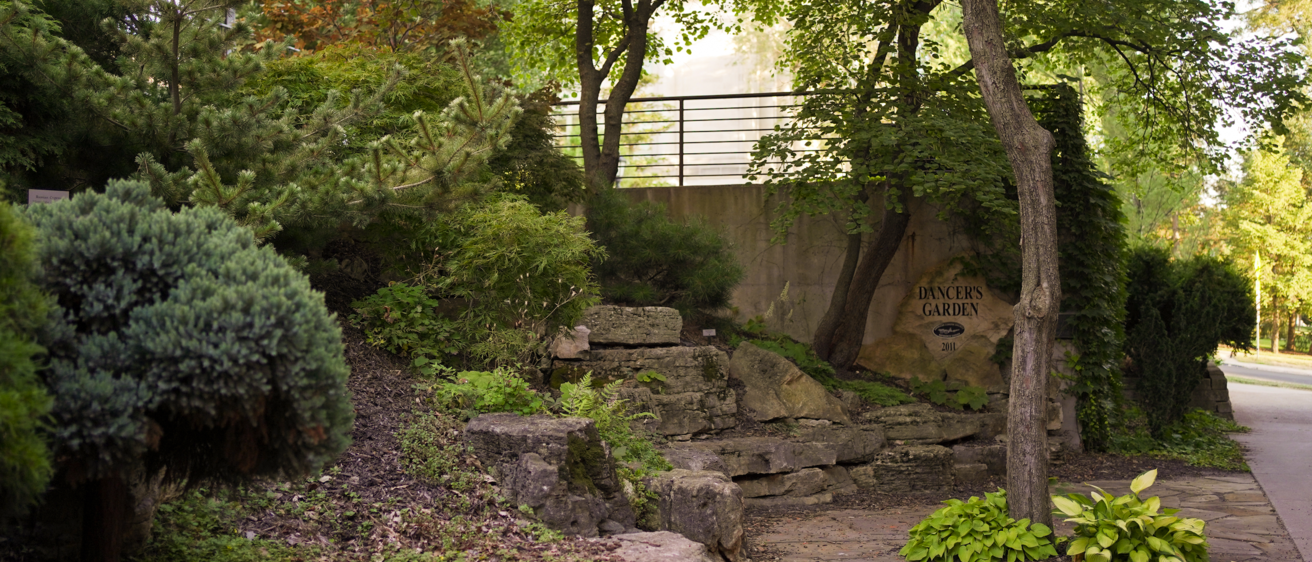
Dancer's Garden, Halsey Hall
The first Reference Garden, the Dancer’s Garden, is the crown jewel of the University’s conifer collections. The garden’s location had long been the only green space between two buildings on the main campus; Halsey Hall and Calvin Hall. For years the green space between these two buildings was known as PI Hill (poison ivy) and was viewed as an embarrassment by the university. Starting in the fall of 2011, the landscape services team received permission to install a conifer garden in this area. The landscape services team began by removing all the groundcover and seven trees. They graded the slope slightly and installed four semi-loads of limestone. This stone accentuates the topography of the site and replicates a natural bluff landscape. The garden features a waterfall which attracts both avian and human visitors during the summer. The garden includes 16 genera (four of which are deciduous), comprising 31 species, and 46 cultivars. Notable specimens include a Picea mariana 'Wellspire' that was salvaged from the original conifer garden that was flooded in 2008 and a Pinus strobus, 'Witches' Broom' found on campus.

Eckstein Medical Research Building Garden
The second Reference Garden is the Eckstein Medical Research Building (EMRB) Garden. The first phase was installed in the fall of 2010 and the second phase completed in 2013. The garden surrounds a popular patio outside a café. Before the garden was planted, the area around the Eckstein Medical Research Building had become overgrown. The landscape services team removed the overgrown plantings, built raised beds and installed a variety of conifers to make a secret garden “room” which now draws people in to explore. This garden features 17 genera (four of which are deciduous), 36 species and 40 cultivars. Notable plants include a large Ginkgo ‘Spring Grove’ and a Picea polita originally planted at another site in 2002.
